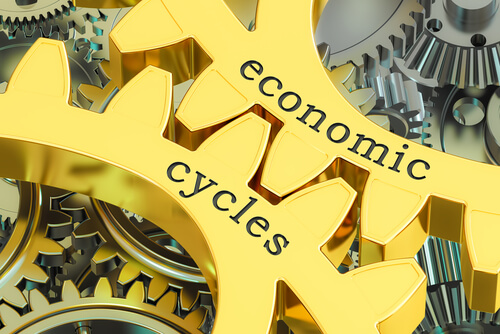
WEALTH PATH
Economic Cycle: Beginner's guide
We read about the positive or negative changes in Gross Domestic Product (GDP) of a country, a contributing factor that helps to understand and analyze the growth stage of an economy. We will try to simplify economic cycles and explain all you need to know about them in this article.
What is an Economic Cycle?
An economic cycle is the movement of an economy between expansion and contraction and everything else in between. The current stage of an economic cycle is determined by factors such as Gross Domestic Product (GDP), employment rates, interest rates, spending habits of consumers, etc. In terms of GDP, an economic cycle shows a trend of upward and downward movements in GDP, which consequentially affects the growth of an economy. An economic cycle can also be referred to as a business cycle.
Stages of an economic cycle
There are four stages of an economic cycle and once these four stages are complete, it starts all over again:
- Expansion: During this stage, an economy will experience high levels of growth, and interest rates will be generally lower, and will gradually begin to increase as the expansion continues to grow. Rate of production increases in this stage, and the tendencies of inflation increases. Also, businesses begin to generate more profits, which would enable them hire more employees and this in turn allows for the individual to have more disposable income and an increased rate of spending.
- Peak: When growth is at its maximum point, one can say that the economic cycle is in its peak stage. There is usually high inflation in this stage that would need correction.
- Contraction: The contraction stage is the correction necessary to remedy the increasing rate of inflation. During this period, growth is paused or slowed down, employment rate spirals downwards and prices initially stabilize. In the contraction stage businesses lose profits, which leads to a high rate of unemployment, because they would have to let staff go.
- Trough: This is the lowest point of an economic cycle. In this stage, the economy experiences a low point of growth and slowly begins to recover to re-enter the expansion phase once more.
An economy should be in a constant state of expansion; however, few contraction periods are necessary to ensure that the economy remains stable.



.jpg)
.jpg)
.jpg)